
Who Were
The Cambs
The Cambs
at War
1/1st Btn 1914-1919
1914 - 1/1st Overview
1915 - 1/1st Overview
1915 - St Eloi
1915 - Fosse Wood
1916 - 1/1st Overview
1916 - The Schwaben
1916 - St Pierre Divion
1917 - 1/1st Overview
1917 - St Julien
Insignia, Medals & Books
Remembering The Cambs
Biographies
About Us &
This Site
C Company at Fosse Wood, 5th - 6th May 1915.
In less than 12 hours around 100 men from the old Wisbech and Whittlesey Companies suffered the highest losses for the Cambs in any day of 1915. A small copse of trees known as Fosse Wood jutting out from the larger Armagh Wood to the South East of Ypres was the scene for the bloody episode. Although this dank little wood was behind the front line it was just to the north of the key positions at Hill 60.
During the bitter fighting on the hill in early May it looked likely that a German push could move through Fosse Wood and encircle many of the British units in the front line. In order to secure the wood part of C Company were quickly told to take up positions and hold them until the front stabilised.
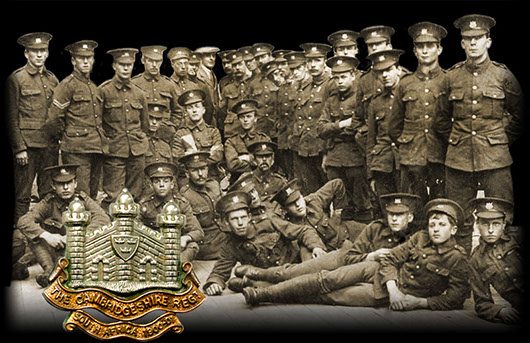
Men from Wisbech on the night of 4th/5th August 1914 after receiving their mobilisation orders.
Background
The month of April, 1915, had been a sharp learning curve for the Cambridgeshires. The inexperienced soldiers who had first entered the line the previous month had learnt numerous lessons and experienced some of the most trying conditions in France and Flanders. Some of the trenches manned by the Cambs were in a terrible state and in very unfavourable positions. The pressure on the front line and on the supply lines also led to ammunition shortages for both the men and the artillery (for more info on the Cambs Transport Section at the 2nd Battle of Ypres click here). Casualties in the battalion for the month had been 13 officers and men killed and around 70 wounded or invalided out.
Activity and fighting in the Salient had increased dramatically with the start of the Second Battle of Ypres on the 22nd April. The German attempts to cut off the Salient now involved the use of gas and resulted in them gaining ground in areas. At the start of May it was decided to shorten and tidy up the front line. In order to do this the Cambs and the rest of the brigade were ordered to fall back to new positions in a carefully planned withdrawal. This took place on the night of the 3rd May and went to plan, the enemy not knowing that the men had fallen back until the withdrawal was complete.
In the days that followed the withdrawal the German pressure on the area continued especially around Hill 60 off to the right of the Cambs positions. The positions at Hill 60 had been the scene of fierce fighting since its capture by the British on the 17th April. Numerous German counter attacks had been pushed back, but by May these combined with the gas attacks were gaining ground. If Hill 60 was to fall it was realised that the new positions occupied by the brigade would be vulnerable and that there was a risk of the enemy working around behind them via a small copse of trees known as Fosse Wood.
5th - 6th May 1915
In order to secure this location should the enemy push down from Hill 60 on the 5th May three platoons from C Company were ordered to occupy the area. These three platoons had been temporarily attached to the 2nd Battalion, The Duke of Cornwall’s Light Infantry who had been sent to help support the 15th Brigade at Hill 60. This order to move and occupy Fosse Wood was to have terrible consequences for the men of C Company: the old Wisbech and Whittlesey Companies.
The CO of the DCLI knew full well that he was asking Clayton and his men to take on a dangerous but necessary task. Looking back at it Clayton writes in the regimental history The Cambridgeshires:
The C.O., a great soldier, warned me that it would probably be a sticky job. “You must move at once and hold on, whatever happens".
Reaching Fosse Wood meant crossing a section of open ground that would likely result in the men being spotted by the Germans fighting up on Hill 60. Despite the best efforts of the officers and NCOs to move the men in small groups, spread out, and in short rushes, the enemy quickly brought down accurate machine gun and artillery fire on them. Several men were hit while crossing to the wood including Sgt Fred Rowe of Wisbech, a pre-war territorial NCO. Rowe, even while wounded, continued to organise his men and keep them moving till they reached the limited cover in the wood.
A C Company soldier writing to Fred Rowe's wife to inform her that Fred had been wounded said:
I assure you that he was going on quite nicely when I left him at the dressing station in the good hands of our doctor. How ever we shall get along without him I cannot imagine, for he was more than a father to us all, and whenever a fellow was sick or wounded the only cry was for 'Sergt. Rowe'.
The rest of the men made the dash and then found the best cover they could in the wood, some were lucky and were able to occupy old abandoned French trenches. These only offered limited cover, being in bad repair, shallow and full of water and sewage, however they were safer than being fully exposed. Shells continued to fall accurately on the wood and the growing number of wounded were given as much shelter as possible.
The area was described by one Wisbech Private:
To tell the truth it was a veritable deathtrap. They turned a machine gun - some of our chaps say there were two machine guns - on to us, and then they started shelling us. It was awful while it lasted.
Letters sent home describe the frustration at not being able to fight back, another member of C Coy wrote:
I was in this place for about 12 hours, and dare not move. Fred is well and with some other chaps behaved splendidly in bandaging wounded men up. I shall never forget it, and have been told that we can hardly get into worse fire or predicament than that afternoon. What makes me feel it so is that we could not fire a shot back in self-defence, and all these men have been lost it seems without being able to show anything for it..."
During a slight lull in the shelling in an attempt to organise the positions and defence of the wood Clayton, the Company Commander, gathered the other officers and Platoon Sergeants. No sooner had the men met than a salvo of German artillery shells landed nearby. The closest shell dealt a terrible blow for the Cambs and killed or wounded every man in the group except Clayton. Clayton and other nearby men tried to aid the wounded and keep the platoons in position. By nightfall several other Cambs officers made it through to the men. Despite the continuing artillery fire several stretcher-bearers also made it through and managed to get some of the worst wounded out, other brave stretcher-bearers, such as Pte Davis, were not so lucky and were hit adding to the growing list of wounded and killed.
The effects of the intense and accurate shelling took their toll on the men as did the losses. In a letter home to his mother one private explains:
It has affected a lot of the chaps' nerves. One of my "hut mates" was killed... He was a jolly little chap. It was an awful sight to see the dead and wounded lying all over the place. The reason I do not think we shall go into the trenches again for a bit is because there are so few of our Company left. Nearly all these are suffering with their nerves more of less.
In the early hours of the following day orders reached the men in Fosse Wood that the situation had changed and the risk of a breakthrough had passed. Once again Fosse Wood was to be abandoned and the remnants of the three platoons were to return to the Battalion positions around Sanctuary Wood. As a last cruel blow for C Coy as the men reached Sanctuary Wood and Clayton stopped to talk to Lt Marr (who had been with the C Coy platoon that was not at Fosse Wood) a stray shell landed close by wounding Clayton. In less than two months since leaving England C Coy had lost every officer it had started out with: Staton wounded, Clayton wounded, Smalley killed, West killed, Saunders killed and Keating had been invalided home.
Aftermath
The terrifying hours that the 100 or so men of C Coy faced in and around Fosse Wood had a lasting effect on the Battalion. Letters home by the survivors and their friends in the other Coys talk of the terror and panic to find shelter as well as the acts of great bravery from both the officers and men who sought to maintain the effectiveness of the platoons or aid their wounded friends. The 12 hours at Fosse Wood over the 5th and 6th May 1915 caused the Cambridgeshires their heaviest casualties for any day in 1915. During that time and as a direct result of the fighting at Fosse Wood 6 officers and men were killed, a further 6 were wounded that would go on to die of their injuries, and around 25 men were wounded. Several of the men were decorated for their bravery, including Sgt Fred Rowe and Pte Alf Davis who were awarded the DCM and Pte Robert Lambert who was retrospectively awarded the MM the following year. Sgt Bert Death from Whittlesey was Mentioned in Dispatches for his gallant actions, he later went on to be awarded the DCM for his bravery on the Somme the following year.
The shelling at Fosse Wood not only caused physical wounds amongst the men, many men were left shaken and these men were cared for by both their comrades and in the more extreme cases these men were invalided either to rest areas or home. In a letter written by a Cambs Sgt to the parents of one such Wisbech soldier he explains:
I am writing to let you know that Victor is not well. He is run down a bit, and has gone to a rest Hospital for a week or two. I was with him till he went from us to the hospital and he asked me to write and let you know, as perhaps he would have a job to write. Our Company has been having a very rough time of it... One poor boy died in Victor’s arms, and he bandaged several more men up. He acted in a most brave manner.
Sgt Fred Rowe went on to recover from his wounds and continued to serve with the Cambs. He re-enlisted after the war and went on to become the CSM for C Company. He became a well known figure in Wisbech as both the secretary for the local branch of the Cambridgeshire Old Comrades Association and as the Beadle for the Wisbech Town Council. He died in 1970. The citation for his DCM states:
On 5th May this NCO’s company was heavily shelled besides being subject to a considerable volume of machine gun fire and rifle fire while proceeding to occupy a position near Hill 60. Sgt Rowe was hit in three places, but after having his wounds dressed he returned and took command of his platoon throughout the night, his platoon officer having meanwhile been severely wounded.
Alf Davis from Whittlesey, who had been working as a stretcher-bearer, was not so lucky. His wounds were very severe and resulted in him losing his leg, he endured many months in hospital and numerous operations before finally being discharged in early 1916. His DCM citation states:
For conspicuous gallantry as a stretcher bearer. He was seriously wounded in the attempt to bring in a wounded man under very heavy fire.
More info on Alf can be found on the biography page of Cpl Rawson by clicking here.
Robert Lambert was initially Mentioned in Despatches for his actions at Fosse Wood, during which he was wounded numerous times but continued to lead his men and aid the wounded. He was retrospectively awarded the Military Medal when it was later introduced. After recovering from his wounds he returned to the 1/1st Battalion. He was mortally wounded in the fighting at Tower Hamlets on the 26th September 1916.
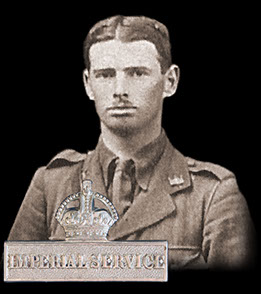
Capt Clayton, in early 1915.
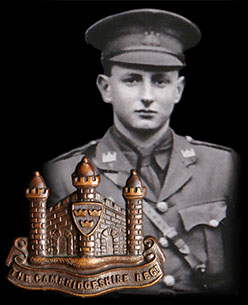
Lt Edwin Saunders, killed on the 5th May.
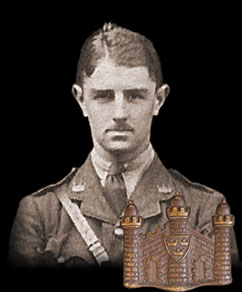
Lt Monte West, died on the 6th May.
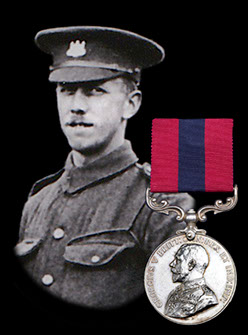
Sgt Fred Rowe DCM from Wisbech.
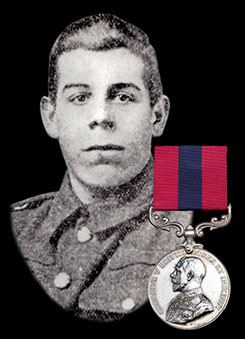
Pte Alf Davis DCM, from Whittlesey.
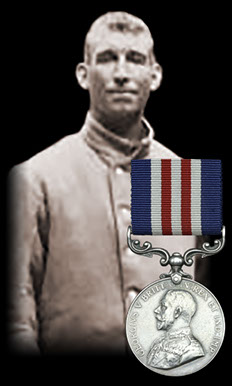
Pte Robert Lambert MM from Cambridge.
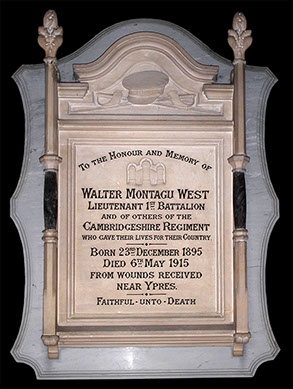
Memorial to Monte West at Friday Bridge.

This site went live on the 14th February 2015 to mark 100 years since the 1/1st Cambs went off to war.
WE WILL REMEMBER THEM
Email us: cambsregt@gmail.com
Copyright 2015, 2016, 2017, 2018, 2019 by Felix Jackson. The information and images on this site should not be reproduced without prior permission.